For the Russians, it has been a fretful few weeks. Not since D-Day has a military operation been so anticipated, so habitually described as imminent.
One thing is clear: Ukraine has been planning a counteroffensive against Russia for several months - maybe even for the guts of a year.
But where or when it will begin is not known, nor is what form it will take. Some analysts even suspect it's already under way.
Ukrainian officials have been sending mixed signals.
Earlier this month, defence minister Oleksii Reznikov said his country's forces were "reaching the finish line".
"I am convinced that a lot has been done to make it successful," he said.
But President Volodymyr Zelensky said only last week that Ukraine still needed "a bit more time".
Perhaps the confusion is intentional.
"I think every public announcement from Ukraine should be viewed as essentially misinformation," Jacob Funk Kirkegaard, a former Danish army intelligence officer, told RTÉ News.
"They would love for the Russians to be sitting on the edge for the next month, waiting for the offensive to start."
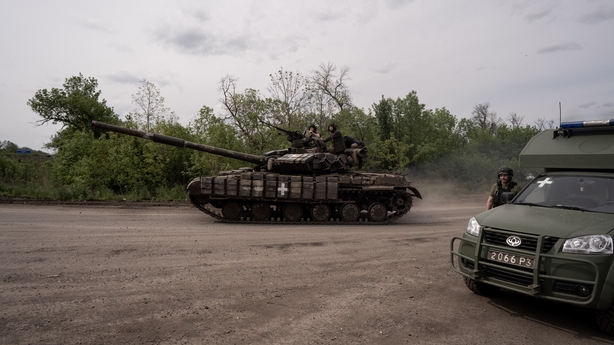
The Russians could indeed be left waiting another month, because time is on Ukraine's side.
In the past few months, Ukraine is thought to have readied as many as nine new brigades of troops for the counteroffensive - or at least 60,000 soldiers.
Russia's military, meanwhile, seems to be in a fallow period.
After a winter offensive that fell far short of the Kremlin's goals, its forces have been depleted. By some estimates, more than 20,000 Russian soldiers have been killed since December. A further 80,000 have been wounded.
Though US intelligence leaks suggest that Russian President Vladimir Putin backed plans to enlist as many as 400,000 new troops, there is no indication that Russia has recruited even a fraction of that number.
"Right now, we don't see it happening," Phillips O'Brien, a professor at the Institute for the Study of War and Strategy at the University of St Andrews, told RTÉ News.
Prof O'Brien recently returned from Kyiv, where he was part of a group of academics that met with senior Ukrainian military leaders and policymakers.
In other words, there is no rush. In fact, there are several clear advantages to waiting.
For one thing, Ukraine is still expecting to receive deliveries of key weaponry, such as crucial Leopard 1 tanks from Germany, Denmark and the Netherlands.
At least 100 tanks are due to be delivered by the beginning of June.
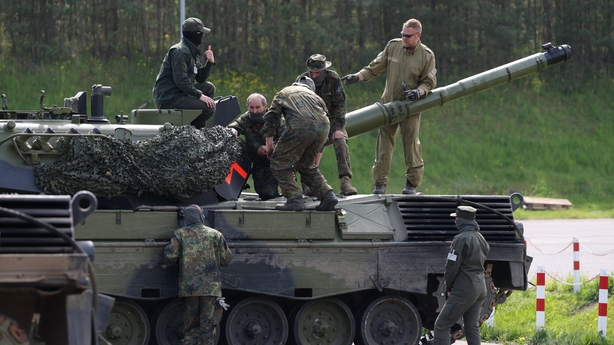
"That's a significant amount of military hardware that will materially strengthen the Ukrainian military capabilities," said Mr Kirkegaard, who is now a senior fellow at the German Marshall Fund.
"It's worth waiting for."
At the same time, Russia continues to attack on the frontline, such as in the eastern city of Bakhmut, the site of the war's bloodiest battle.
One rule of thumb in war is that it is much easier to defend, as Ukraine has been doing, than to attack.
"The Russians have been attacking, mindlessly, across the entire front," Mr Kirkegaard said.
Ukraine is using the extra time to train its men, to familiarise soldiers with the new equipment, and to carefully lay out its plan of attack.
It is also engaging in psychological warfare on social media.
"The aim is to degrade Russian willingness to fight and plant the seed of uncertainty about Russia's ability to hold the lines," Konrad Muzyka, a defence analyst at Rochan Consulting, said.
But it has also begun battlefield preparation, or so-called shaping operations.
Partly thanks to the timely delivery of long-range cruise missiles from the UK, Ukraine has been able to target Russian supply lines, fuel, ammunition, and other key logistical assets.
Hoping to stymy the counteroffensive, Russia has returned the favour in recent days with a fusillade of missile strikes on Ukrainian targets.
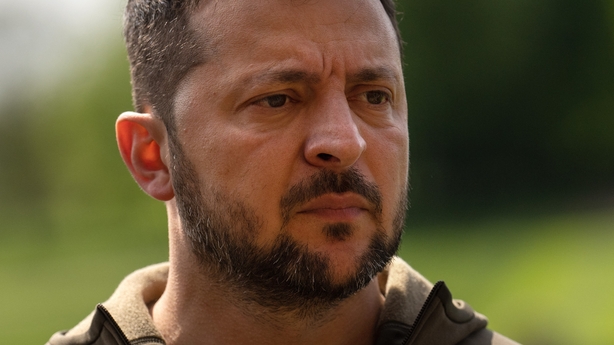
Ukraine's shaping operations can partly explain why, on some level, it looks like the counteroffensive has indeed begun.
"The people who I speak to on the ground - mid-level officers - their assessment is that the counteroffensive has started," Mr Muzyka said.
There was also a meaningful shift in momentum in Bakhmut, where Ukraine claims to have retaken 20sq/km of land.
To Prof O'Brien, that success was merely evidence that the Ukrainians had found a weak point in the Russian line - and decided to push through.
"This is not the counteroffensive. This is preparation," he said.
As much as people would like an official announcement to signal the beginning of the counteroffensive, Ukraine is unlikely to be revealing about such matters.
There will nevertheless be signs that it has got under way - the most obvious being the deployment of those tens of thousands of troops.
But they may not all be deployed in one go, like something from a World War II movie.
"We should not expect a big blow at once, at least not now," Mr Muzyka said.
Even then, Ukraine has demonstrated an ability to conduct multiple offensives at the same time.
In August and September, it began a stunning counteroffensive that eventually saw it reclaim territory in two parts of the country, redrawing the battlefield map in the process.
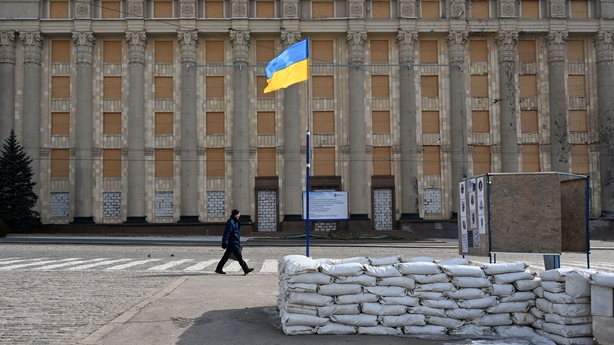
It took several months to take Kherson - but Ukraine's military proved it could come out on top after a grinding battle.
And it conducted a rapid-fire sweep in the Kharkiv region, more than 500km away, when it determined that Russian positions were being poorly defended.
"I think you could certainly see them trying to deploy several brigades in several different locations in this counteroffensive," said Mr Kirkegaard.
It is nonetheless unlikely that Ukraine's military will come across a target as easy as the Kharkiv region was in September 2022.
But they will still be searching for weak points in the Russian line, and it will all depend on the Russian resolve.
"If the Russian army is really in dire straits, then Ukraine has a chance of significant success. Otherwise I think it will be quite a slug fest. It'll be hard," Prof O'Brien said.
In any case, it's clear that Ukraine has a strategic opportunity to take back a lot of territory using its new forces.
The Russians seem to believe that Ukraine is planning to target the southern Zaporizhzhia region, and for good reason.
We need your consent to load this Datawrapper contentWe use Datawrapper to manage extra content that can set cookies on your device and collect data about your activity. Please review their details and accept them to load the content.Manage PreferencesSuccess here would give Ukraine control of huge swathes of land north of Crimea, which Russia illegally annexed in 2014.
As part of his 10-step peace plan, Mr Zelensky has insisted that his country's goal is the total liberation of Ukraine, including Crimea.
As such, the bulk of Russia's defensive capabilities have been placed in Zaporizhzhia.
While Ukraine has increased ground attacks in areas such as Donetsk, "the main punch" will likely happen there, Mr Muzyka said.
Zaporizhzhia is also geographically advantageous for the type of warfare Ukraine seems to be preparing for. It is flat and pretty open - and therefore tank territory.
However, two questions remain. For one, what would a successful Ukrainian counteroffensive look like?
"Success, for me," said Prof O'Brien, "is to cause a collapse in the Russian army in some place such that the Ukrainians can quickly move through it and exploit it."
"They could then get into a position where they can make a serious attempt to cut off Russian logistics and supply lines," he said.
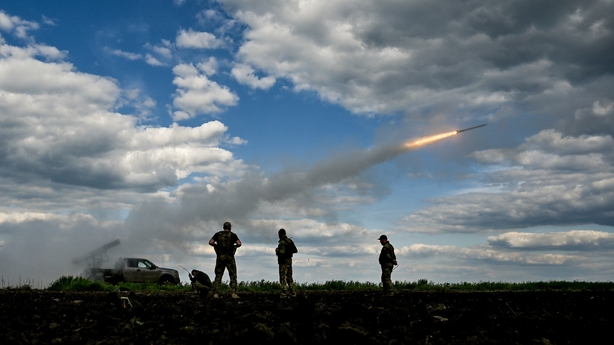
Ukrainian officials have been keen to downplay expectations, fearing that the counteroffensive may not live up to hopes.
But even NATO Secretary-General Jens Stoltenberg has made allusions to a more lofty goal - repeatedly going on record to say it was NATO's job to give Ukraine the weapons it needs "to win this war".
At the end of April, he said that Ukraine had received 98% of the combat vehicles it had requested.
In other words, he believes Ukraine now has what it needs to defeat Russia.
"The credibility of NATO is on the line here," said Mr Kirkegaard.
"You don't, as NATO, go out and say, 'oh, they have 98% of what they need to win this war', if you believe that it's headed for a frozen conflict."
And, finally, there is the question of when.
"I think the Ukrainians will take their time, they will be as well prepared as they can, and they will grind the Russians down as much as they can before they start," Mr Kirkegaard said.
"To me, that means I think it will probably start in a month or so."





